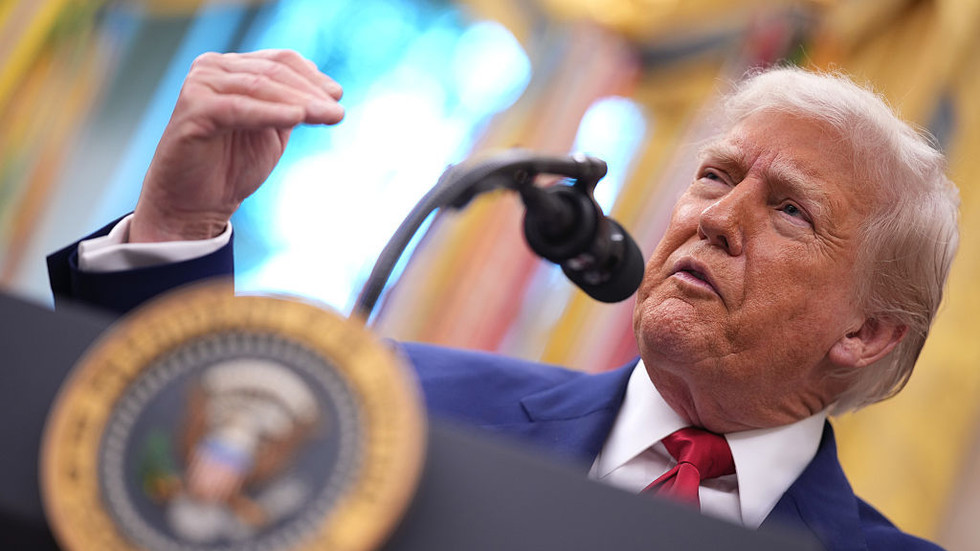Washington and Beijing agreed earlier this month to roll back triple-digit tariffs
US President Donald Trump has accused China of breaching a tariff agreement reached earlier this month, reigniting tensions in a fragile trade truce between the world’s two largest economies.
Under the deal announced on May 12 after breakthrough negotiations in Geneva, the US and China agreed to suspend most new duties imposed since early April, pending further talks.
On Friday, Trump took to his Truth Social platform, writing: “China, perhaps not surprisingly to some, HAS TOTALLY VIOLATED ITS AGREEMENT WITH US.” He gave no specifics but said China had been in “grave economic danger” as a result of the tariffs, before Washington stepped in with what he called a “FAST DEAL.”
“I saw what was happening and didn’t like it, for them, not for us,” Trump wrote, adding “So much for being Mr. NICE GUY!”
Multiple outlets reported this week that the Trump administration has ordered US companies to halt shipments of high-end goods to China, including chip design software and specialty chemicals. Experts warned the decision would be likely to further escalate tensions with Beijing.
The May 12 agreement had paused the 34% tariff hikes introduced on April 2 for 90 days, with Beijing taking reciprocal action. Both sides also committed to rolling back tariff increases introduced since April 8, while keeping a baseline 10% duty on mutual imports.
US Trade Representative Jamieson Greer told CNBC on Friday that China had not removed certain non-tariff barriers as agreed under the deal. “They removed the tariff like we did but some of the countermeasures they’ve slowed on,” he said.
Treasury Secretary Scott Bessent echoed that concern, telling Fox News the negotiations were “a bit stalled” and may now require direct involvement from Trump and Chinese President Xi Jinping. He said he expected talks to resume in the coming weeks.
China on Friday urged Washington to “immediately correct its erroneous actions, cease discriminatory restrictions against China and jointly uphold the consensus reached at the high-level talks in Geneva.”
As part of that consensus, Beijing had also agreed to ease non-tariff measures such as export controls on US goods. The changes were due to take effect on May 14, alongside the creation of a bilateral consultation mechanism for future trade steps.
Tensions spiked on April 2, when Trump imposed sweeping new tariffs on more than 90 countries, including China, citing trade imbalances. Beijing retaliated, triggering a tit-for-tat standoff that saw final US duties climb to 145% and Chinese tariffs to 125%. The dispute rattled global markets, driving volatility across equities and commodities.
Read the full article here
